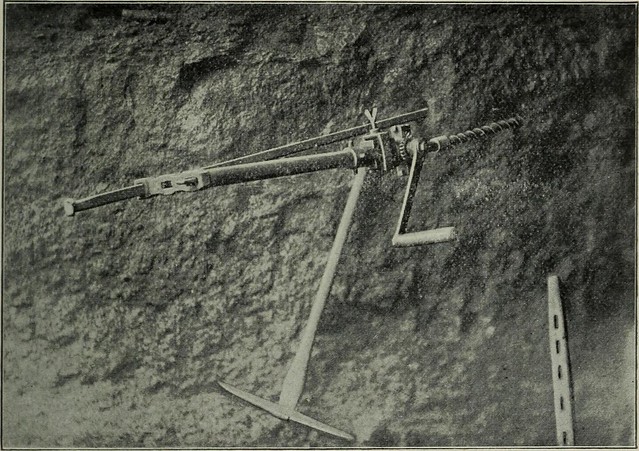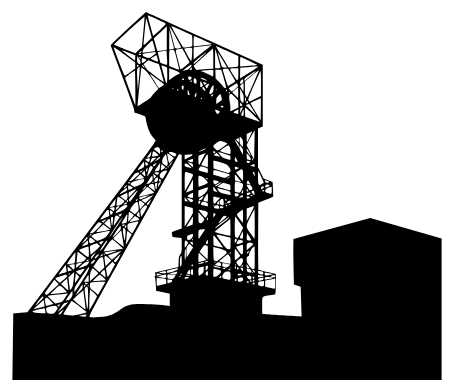Gray-Tarbit Rotary Drillkng-machine
-
Description
Image from page 204 of "Transactions" (1852)
Identifier: transactions53nort Title: https://www.flickr.com/photos/internetarchivebookimages/tags/bookidtransactions53nort">Transactions Year: https://www.flickr.com/photos/internetarchivebookimages/tags/bookyear1852">1852 (https://www.flickr.com/photos/internetarchivebookimages/tags/bookdecade1850">1850s) Authors: https://www.flickr.com/photos/internetarchivebookimages/tags/bookauthorNorth_of_England_Institute_of_Mining_and_Mechanical_Engineers__Newcastle_upon_Tyne">North of England Institute of Mining and Mechanical Engineers, Newcastle-upon-Tyne https://www.flickr.com/photos/internetarchivebookimages/tags/bookauthorNorth_of_England_Institute_of_Mining_and_Mechanical_Engineers__Newcastle_upon_Tyne__Report_of_the_Committee_upon_mechanical_coalcutting__1905">North of England Institute of Mining and Mechanical Engineers, Newcastle-upon-Tyne. Report of the Committee upon mechanical coalcutting, 1905 Subjects: https://www.flickr.com/photos/internetarchivebookimages/tags/booksubjectMineral_industries">Mineral industries https://www.flickr.com/photos/internetarchivebookimages/tags/booksubjectMechanical_engineering">Mechanical engineering Publisher: https://www.flickr.com/photos/internetarchivebookimages/tags/bookpublisherNewcastle_upon_Tyne">Newcastle-upon-Tyne Contributing Library: https://www.flickr.com/photos/internetarchivebookimages/tags/bookcontributorGerstein___University_of_Toronto">Gerstein - University of Toronto Digitizing Sponsor: https://www.flickr.com/photos/internetarchivebookimages/tags/booksponsorUniversity_of_Toronto">University of Toronto View Book Page: https://archive.org/stream/transactions53nort/transactions53nort#page/n204/mode/1up" rel="noreferrer nofollow">Book Viewer About This Book: https://archive.org/details/transactions53nort" rel="noreferrer nofollow">Catalog Entry View All Images: https://www.flickr.com/photos/internetarchivebookimages/tags/bookidtransactions53nort">All Images From Book Click here to https://archive.org/stream/transactions53nort/transactions53nort#page/n204/mode/1up" rel="noreferrer nofollow">view book online to see this illustration in context in a browseable online version of this book. Text Appearing Before Image: st a prop fixed between theroof and the floor. It was soon found that a great drawback to the use of themachine was the time spent in setting these props or stands,a considerable portion of the time saved in drilling the hole beingspent in the preliminary setting of the props and in changingthe drills. In many instances, the stone thrown down by the RATCHET AXD HAND-MACHINE DRILLS. 1<7 previous shot would be lying where the prop should stand ; andin other instances, owing to projections of the side of the working-place, the prop could not be set near enough to the side to obtainthe right direction of the hole. It became necessary, therefore.to supplement the prop with a cross-bar of iron between it andthe side of the place, the end of the machine resting against thisbar. Old permanent-way fish-plates were found to be suitablefor this purpose. For convenience, they were pointed at oneend to make the bar fit better against the stone, the other endbeing fastened by a nail to the prop. Text Appearing After Image: Fig. 11.—Gray-Tarbit Rotary Drillkng-machi^e. After a time, this pointed end was driven into a recess madein the stone, and it was found to fasten itself so well that when astronger bar of iron was pointed with a chisel-end and driveninto a hole made about lh inches deep, by a pick, it was sufficientlyfirm to stand the thrust of the machine without the aid of a propto support the other end. This discovery, at once, very materially increased the facilitiesof working, and may be said to have brought about the successwhich has attended the use of this mode of drilling in the Cleve-land mines. It rendered unnecessary the props or stands which 178 RATCHET AXD IIAXD-MACTIIXE DRILLS. were hitherto used, and made it possible to fix the machines sothat the holes we:e drilled in the very best position for theadvantageous blasting of the stone. Figs. 1 and 2 (Plate XV.) show the pointed bar, a, of irondriven into the side of the place, and the ratchet-machine set fordrilling; b is the barrel o Note About Images Please note that these images are extracted from scanned page images that may have been digitally enhanced for readability - coloration and appearance of these illustrations may not perfectly resemble the original work. -
Owner
Internet Archive Book Images -
Source
Flickr (Flickr) -
License
What does this mean? No known copyright restrictions -
Further information
Link: https://www.flickr.com/photos/126377022@N07/14763559454/
Resource type: Image
Added by: Simon Cotterill
Last modified: 5 years ago
Viewed: 574 times
Picture Taken: 1852-01-01T00:00:00 -
Co-Curate tags



